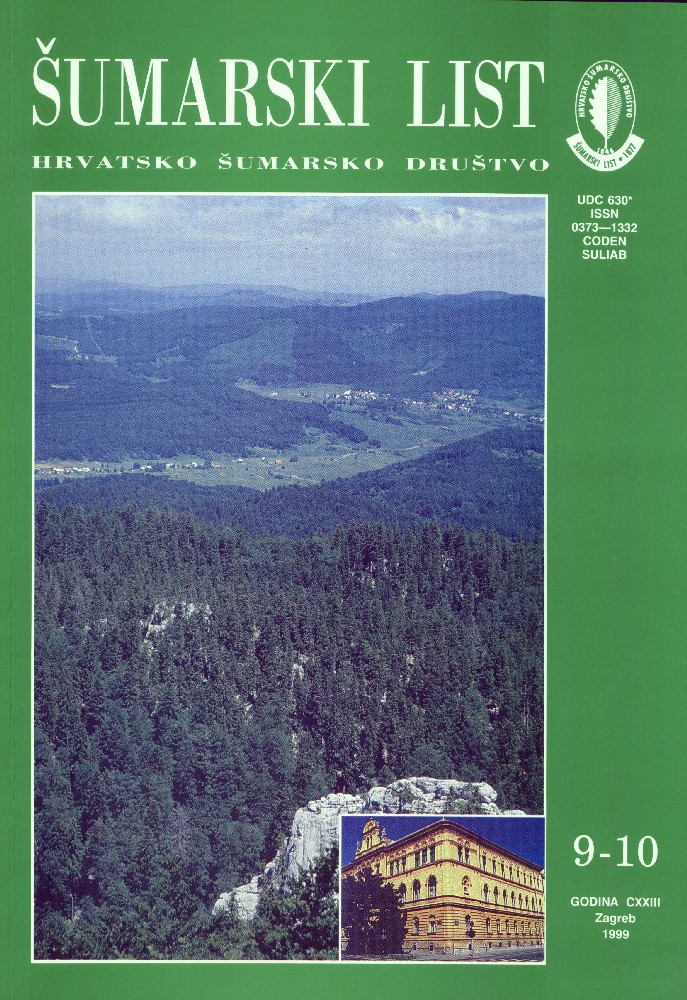
broj: 9-10/1999
pdf (26,1 MB) |
|
||||||||||||||
| IZVORNI ZNANSTVENI ČLANCI | ||
| Topić, V. | UDK 630* 114.2 + 237 (001) | |
| Amelioration Effects of Forest Cultures on the Karst in Relation to the Pedosphere pdf HR EN | 411 | |
| Ballian, D., Mikić, T., Pintarić, K. | UDK 630* 232.1 (001) (Pseudotsuga menziesii) | |
| Growth Analysis of 5 Douglas Fir Provenances (Pseudotsuga menziesii Mirb. Franco.) in Field Experiment at Batalovo Brdo pdf HR EN | 423 | |
| Meštrović, A. | UDK 630* 524.6 + 122 (001) | |
| Prosper of Pinus heldreichii Christ in Herzegovina pdf HR EN | 431 | |
| PRETHODNO PRIOPĆENJE | ||
| Risović, S., Domac, J. | UDK 630* 831 + 839 | |
| Usage and Energy Potential of Biomass from Wood Processing Industry in Zagreb County pdf HR EN | 453 | |
| STRUČNI ČLANCI | ||
| Dimitrov, T. | UDK 630* 432 | |
| Forest Fires in Croatia - a Motive for Consideration pdf HR EN | 461 | |
| Tustonjić, A., Pavelić, J., Farkaš-Topolnik, N., Đuričić-Kuric, T. | UDK 630* 614 + 911 | |
| Forests Within the Regional Plan of County of Zagreb pdf HR EN | 469 | |
| Summary: The paper gives an overview of the area under state forests managed by the Forest Office Zagreb. Those forests are partly located in the area of County of Zagreb. Protective and transitional zones have been proposed with the following objectives: to lossen conflicts of interest between civil eingineering and forestry, ensure access to forests, and preserve the diversity of natural resources to counterbalance an increasing urbanisation of Zagreb surroundings, industrialization, developement of communications and other prossures on undeveloped land.Certain possibilities can be found in registering, preserving and managing private forests, especially when linked to state forests or when representing larger units. The proposals for forest protection involve a ban on building forest roads, changing the purpose of forests or distributing forest edges. To satisfy building conditions 50 m away from the edge, guidelines issued by the Forest Enterprise should be followed, and where possible, building should be banned by the regional plan (the paper proposes forest units). The existing building activities should be retained within the given dimensions so that they conform to the surroundings. Building in the protected forest zone should not be allowed. Private plots in the vicinity of forests should not be fenced off. Forests protected by the Nature Protection Act (Nature Parks, Park Forests, Important Landscapes and other facilities) must be managed on a professional basis. The degree of protection may affect management Methods and Intensity, but the fundamental forestry principles (tending and regeneration) remain the same. The basic phenomenon should be zoned. This implies management methods in certain forest complexes in terms of the ecological functions to be enchanced. | ||


